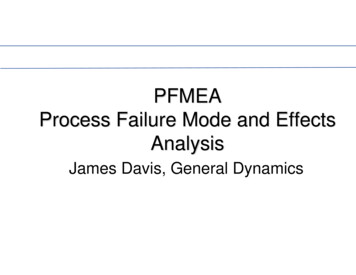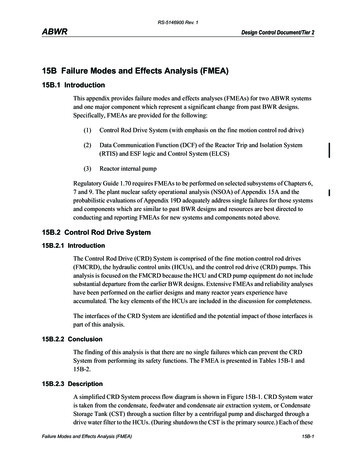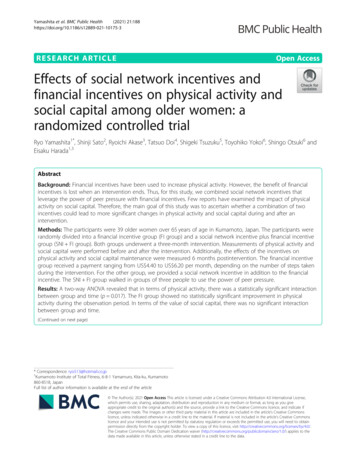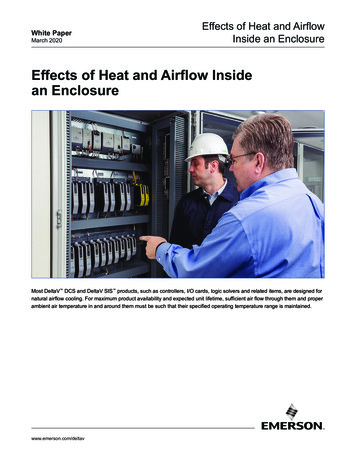
Transcription
White PaperMarch 2020Effects of Heat and AirflowInside an EnclosureEffects of Heat and Airflow Insidean EnclosureMost DeltaV DCS and DeltaV SIS products, such as controllers, I/O cards, logic solvers and related items, are designed fornatural airflow cooling. For maximum product availability and expected unit lifetime, sufficient air flow through them and properambient air temperature in and around them must be such that their specified operating temperature range is maintained.www.emerson.com/deltav
White PaperMarch 2020Effects of Heat and AirflowInside an EnclosureTable of ContentsIntroduction . 3Heat Impact on Expected Lifetime . 3Airflow Considerations . 3Heat-related Issues . 4Solutions . 4Maintenance Considerations . 6Conclusions . 6www.emerson.com/deltav2
Effects of Heat and AirflowInside an EnclosureWhite PaperMarch 2020IntroductionThis paper discusses the importance of the site environment – which cannot be overstated. Environmental conditions suchas elevated temperature can cause gradual performance degradation, intermittent failures, and malfunctions in all electronicequipment. In order to prevent problems during the operation of both control and safety systems, effects of heat and airflowon equipment installed in enclosures must be considered during the system design. This whitepaper is not intended toreplace installation manuals or cabinet design but rather provide information about the heat impact on the life ofelectronic components.Heat Impact on Expected LifetimeThe term “Expected Lifetime” is used to describe the timespan between installation of a product unit and component failurewithin that product unit and is an estimate based on many environmental conditions including temperature. Calculations forexpected lifetime assume a certain temperature within the units specified operating range – but not at the upper limit. Whenthe equipment is operated below that operating temperature, expected lifetime is not impacted. If the equipment is operatedat a higher temperature for long periods of time, the failure rate increases which impacts the expected lifetime. Heat wearsout electronic components; as explained by the Arrhenius effect equation, for every 10 C increase in operating temperature,the failure rate will double. This behavior is not specific to Emerson products, the reliability of any electronic component isaffected by heat.The chart below is an example illustration of the reduction of expected lifetime for each 10 C rise in operating temperature fora hypothetical device, during a hypothetical time period ranging from 12.5 years to 200 years.TempExpected Lifetime25 C200 years35 C100 years45 C50 years55 C25 years65 C12.5 yearsThe actual operating temperature should be considered when evaluating the useful life of electronic equipment includingDeltaV and DeltaV SIS components.Airflow ConsiderationsMost DeltaV DCS and DeltaV SIS products, such as controllers, I/O cards, logic solvers and related items, are designed fornatural airflow cooling. For maximum product reliability, sufficient air flow through them and proper ambient air temperaturein and around them must be such that their specified operating temperature range is maintained. Proper temperature levelspromote good system health and product availability.All DeltaV DCS and DeltaV SIS products are designed to operate within a specific temperature range: for example,-40 C to 70 C. Consult the product datasheet for each product to determine the specific temperature range. The publishedinformation indicates the temperature range a particular product is capable to withstand, however, as mentioned earlier,running the product at the higher end of the temperature range for long periods of time will increase the failure rate ofelectronic components.www.emerson.com/deltav3
White PaperMarch 2020Effects of Heat and AirflowInside an EnclosureHeat-related IssuesSome heat-related issues identified during design reviews and troubleshooting are: Enclosure designs that do not allow adequate heat dissipation and air flow, resulting in very high internal temperatures. Enclosure designs that lead to hot spots because of lack of air circulation in particular areas of the enclosure. Enclosures located in areas of higher ambient temperatures caused by, for example, adjacent heat-producing equipmentor direct sunlight. Equipment, interconnected wiring, and cabling inside of an enclosure so tightly packed that natural airflow is inhibited. Wiring Panduit mounted too close to devices, cutting off adequate airflow, especially if the Panduit is packed with wiringand cabling. Devices with opposite-side cooling slots and adjacent products mounted too close for adequate cooling air. Devices that should be mounted vertically or horizontally for adequate airflow, but which have been mounted otherwise. Mounting of heavy heat-producing devices in the enclosure, such as power supplies generating high internal temperatures.SolutionsExpected system reliability does not occur by accident. Enclosures must be designed, properly located and maintained tomeet expectations. DeltaV products can be installed outdoors in field enclosures and will operate per the specified temperaturerange. Running any electronics at the higher end of its temperature range for long periods of time will decrease its expectedlifetime. In some cases, due to installations constraints, the unit’s expected lifetime may not be achievable, but approachingit is usually feasible by mitigating heat effects as much as possible.The DeltaV Power and Grounding manual in Appendix E has information on the effects, data on how to calculate the effects,and suggestions on how to make useful changes to improve heat dissipation.Some methods to consider for improved heat dissipation are:1. Proper placement of pieces of equipment in relationship to each othera. Power suppliesb. Panduitc. Cable wiring into and out of the enclosured. Device placement for maximum air circulationNotes: Enclosure design must consider minimum distances specified by the equipment vendors. For DeltaVequipment, please consult the planning and designing documentation. The wiring must, as a minimum, conformto NFPA and NEC, and applicable local, regional and national codes to ensure that it can conduct load safelywithout overheating.www.emerson.com/deltav4
White PaperMarch 2020Effects of Heat and AirflowInside an Enclosure2. Auxiliary designs for cooling and air flowa. Use of side and top vents to move cool air in and hot air outb. Use of instrument air and vortex coolers (a filter system may be needed on the input line to ensure clean anddry air)i. Allows positive pressure inside the enclosureii. Allows small amounts of air to improve airflow beyond convection aloneiii. Allows normally cooler instrument air (often used to control dew point) to lower enclosure internal temperaturec. Use of heat sinks or cooling fansd. Mounting products to take advantage of the natural cooling openingse. Making sure the enclosure is not receiving warm moist air from other areas through conduit openings3. Circuit designs for proper energy dissipationDesign circuits so that all of the power does not dissipate inside an enclosure. For example, some circuits such as anAS-Interface can be wired in parallel or series. Series wiring dissipates more energy inside the unit and enclosure,whereas parallel wiring dissipates more energy in the field devices.4. Enclosure Fansa. Locate fans to move air in such a way that enclosure sheet metal can dissipate heat.b. Locate fans to provide maximum airflow over and through all installed devices. Sometimes, fans are mountedso that they are ineffective in actual cooling or providing critical airflow. Fan placement is an important aspectof the enclosure design. Consider the following guidelines when selecting the fan location for yourspecific application: Place fans in the bottom of the enclosure to create positive pressure, and place vents at the top rear of theenclosure to exhaust the hot air. This method can maximize cooling and airflow since it works with the naturalphysics of convection currents. Place exhaust fans at the top back of the enclosure and pull air through from the bottom, creating negativepressure. The drawback to this method is that air in connected conduits can be pulled in. Roof cabinet fans have significant advantages over door cabinet fans since roof fans generally have a bigger airdisplacement capacity than door mounted fans. In addition, the placement of roof fans right above the equipmentensures a bigger cooling effect than door fans.5. High-Heat Load Device Mountinga. Mount high-heatloads toward the enclosure top so the heat does not pass around or through other devices whileit naturally rises.a. Mount high-heat loads near enclosure sides for best heat dissipation through sides instead of throughother devices.b. Mount high-heat loads in such a way that natural airflow circulations (higher temperature on one side and coolertemperature on the other) are generated.www.emerson.com/deltav5
Effects of Heat and AirflowInside an EnclosureWhite PaperMarch 20206. Installation on a shaded areaa. Field enclosures exposed to direct sunlight are subject to solar energy absorption which can raise the temperatureinside the enclosure. Depending on the environmental conditions, sun shades or sun shields should be consideredto lower the temperature for both the enclosure and the electronic components.b. The temperature range specified for some field enclosures expects installation in a shaded area. Installationshould follow the field enclosure manufacturer’s recommendations and if needed, sun shades or sun shieldsshould be installed.These methods can help maximize system availability and the unit’s expected lifetime by better controlling enclosure heat.Such control is fundamental to good enclosure design.It is recommended to perform periodic audits to ensure proper temperature levels within enclosures as well as identifying“hot spots.” Adequate airflow can be determined by measuring the inside temperature at the top, middle, and bottom of thecabinet or enclosure. However, thermal images are the preferred method to measure temperature. A hot spot reading couldbe an indicator of a bigger issue that needs to be reviewed and remedied. Among other things the audit should confirm thatfan directions, fan speed and that airflow is correct.Maintenance ConsiderationsRegular maintenance is very important. Air filters need to be cleaned or replaced periodically. Clogged air filters will lead topoor air cooling, higher temperatures, and a shorter unit’s expected lifetime.ConclusionsAchieving expected system reliability and longer expected unit lifetime is possible by proper system design and maintenance.Please contact your local Emerson sales office for information about maintenance programs to achieve maximumsystem availability.EmersonNorth America, Latin America: 1 800 833 8314 or 1 512 832 3774Asia Pacific: 65 6777 8211Europe, Middle East: 41 41 768 6111www.emerson.com/deltav 2020, Emerson. All rights reserved.The Emerson logo is a trademark and service mark ofEmerson Electric Co. All other marks are the property of theirrespective owners.The contents of this publication are presented for informationalpurposes only, and while diligent efforts were made to ensuretheir accuracy, they are not to be construed as warranties orguarantees, express or implied, regarding the products orservices described herein or their use or applicability. All salesare governed by our terms and conditions, which are available onrequest. We reserve the right to modify or improve the designs orspecifications of our products at any time without notice.
Calculations for expected lifetime assume a certain temperature within the units specified operating range – but not at the upper limit. When the equipment is operated below that operating temperature, expected lifetime is not impacted. If the equipment is operated at a higher temperature for long periods of time, the failure rate increases which impacts the expected lifetime. Heat wears out .

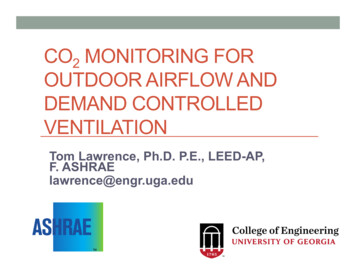
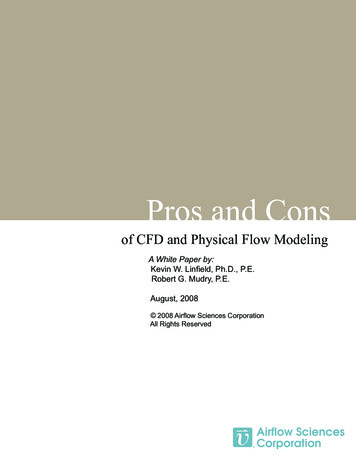
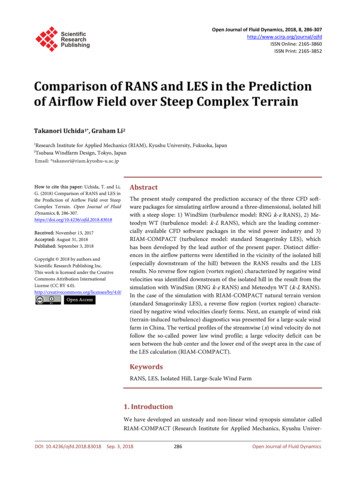
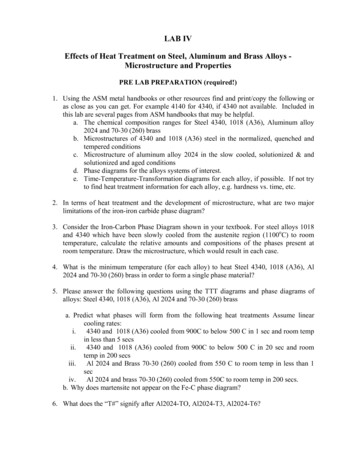
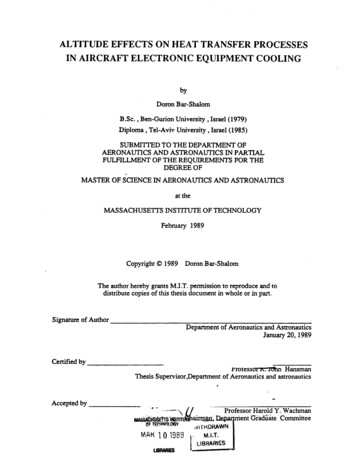

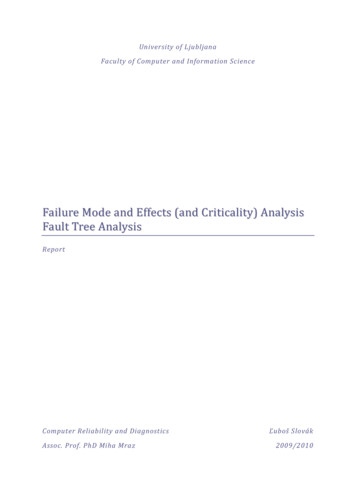
![[digital] Visual Effects and Compositing](/img/1/9780321984388.jpg)
